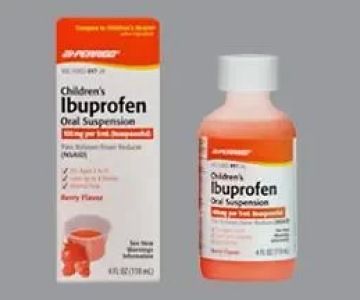WHO Oral Health Assessment Form 2013 for Children: Understanding Its Role and Importance
Ensuring good oral health for children is crucial for their overall well-being. The World Health Organization (WHO) developed the Oral Health Assessment Form in 2013 to help healthcare professionals evaluate the oral health status of children worldwide. This form serves as a tool for tracking children's dental health, identifying risks, and determining the need for further dental care interventions. By understanding and using this assessment form, both healthcare providers and parents can better manage and improve children’s oral health, preventing serious dental problems in the future.
The importance of assessing oral health in children cannot be overstated. Dental issues, such as cavities, gum disease, and malocclusion, not only affect a child’s physical health but can also influence their self-esteem, ability to eat properly, and overall quality of life. Dental problems in childhood can lead to long-term complications if not addressed early. In this article, we will dive deep into the WHO Oral Health Assessment Form of 2013, explaining its structure, purpose, and how it can be used effectively to monitor and improve children’s oral health.
1. The WHO Oral Health Assessment Form: An Overview
The WHO Oral Health Assessment Form was introduced as a standardized tool to assess and monitor the oral health of children aged 5-10 years. The form is designed to be used in a variety of settings, including schools, clinics, and community health programs, to collect data on the dental health of children across different populations.
This form includes a range of criteria, including the presence of cavities, the health of the gums, alignment of teeth, and overall oral hygiene. The goal is to identify any existing oral health issues and to assess the risk factors that may contribute to dental problems in the future. The data gathered through this form helps guide preventive care, early interventions, and referrals to dental specialists when necessary.
2. Key Components of the WHO Oral Health Assessment Form
The 2013 WHO Oral Health Assessment Form for children is divided into various sections that evaluate different aspects of a child’s dental health. Here’s an overview of the key components:
- Dental Caries: This section assesses whether a child has cavities, the severity of the cavities, and whether they have been treated. It helps identify the need for restorative treatments.
- Gum Health: The form evaluates the presence of gum disease, such as gingivitis or periodontitis. Healthy gums are essential for overall dental health, and any signs of gum problems are closely monitored.
- Tooth Eruption and Alignment: The form records the progress of a child's tooth eruption and checks for issues related to misalignment or malocclusion, which may require orthodontic intervention later on.
- Oral Hygiene Habits: This section examines the child’s daily oral hygiene routine, including brushing habits, frequency of brushing, and the use of fluoride toothpaste. Poor oral hygiene is a major contributor to dental decay and gum disease.
- Dietary Habits: The form includes questions about the child's diet, especially sugary snacks and drinks, as these are significant risk factors for developing cavities and other oral health problems.
- Fluoride Exposure: The assessment includes information on whether the child has adequate fluoride exposure, either through drinking water or toothpaste, which plays a vital role in preventing tooth decay.
By collecting this comprehensive data, healthcare providers can gain a thorough understanding of a child’s oral health and develop appropriate treatment plans or preventive measures. This form also serves as a useful tool for tracking changes in oral health over time, providing a longitudinal view of the child’s dental development.
3. The Importance of Early Oral Health Assessments
Early oral health assessments are crucial for preventing dental problems in children. Dental issues, such as cavities, are often not painful in the early stages, making it easy for both parents and children to overlook them. However, untreated cavities can lead to more severe problems, such as infections, tooth loss, and difficulty eating and speaking. The WHO Oral Health Assessment Form helps identify these problems early, allowing for timely intervention.
Additionally, early assessments help parents and caregivers understand the importance of establishing good oral hygiene habits early in a child’s life. Teaching children how to brush their teeth properly, avoid sugary snacks, and visit the dentist regularly can significantly reduce the risk of dental problems later in life. The form also encourages health professionals to provide guidance on these preventative measures during routine check-ups.
4. Using the WHO Oral Health Assessment Form for Children’s Health Programs
The WHO Oral Health Assessment Form is often used in large-scale health programs aimed at improving the oral health of children, especially in low-resource settings. These programs might include school-based dental health initiatives or community health assessments, where healthcare workers use the form to collect data from a large group of children.
For example, a public health program might visit schools to assess the oral health of all children in a particular grade. The data gathered through these assessments can help identify communities at high risk of dental disease and tailor interventions accordingly. This might involve organizing dental education sessions, distributing fluoride treatments, or referring children for dental treatment based on the findings from the assessment form.
Programs that use the WHO Oral Health Assessment Form not only track the current state of children’s oral health but also work towards improving the oral health infrastructure in communities, raising awareness about proper dental care, and creating long-term strategies to prevent oral diseases.
5. How the WHO Oral Health Assessment Form Helps Prevent Future Dental Issues
Preventing dental problems before they develop is one of the main goals of the WHO Oral Health Assessment Form. By identifying children who are at high risk for cavities or gum disease, healthcare providers can offer preventative treatments or recommend lifestyle changes to reduce the chances of these issues occurring.
For instance, children who are found to have a high sugar intake or poor brushing habits might be advised to make dietary changes or improve their oral hygiene routine. Children with early signs of gum disease can be referred for professional cleanings and taught the importance of regular brushing and flossing.
The WHO Oral Health Assessment Form also plays a role in advocating for better dental care policies at the local and national levels. The data gathered from these assessments can highlight areas where oral health services are lacking, prompting policymakers to invest in dental health programs, improve access to care, and address oral health disparities across different populations.
6. Real-World Application of the WHO Oral Health Assessment Form
Let’s take a look at a real-world example of how the WHO Oral Health Assessment Form has been used effectively in a community health initiative. In a rural area of the United States, where access to dental care is limited, a public health organization partnered with local schools to conduct oral health assessments using the WHO form. The results revealed that a significant portion of the children in the community had untreated cavities and lacked proper oral hygiene habits.
Based on this information, the health organization launched an educational campaign in schools to teach children about the importance of brushing and flossing regularly, as well as limiting sugary snacks. They also organized free dental check-ups and fluoride treatments for the children most at risk. Over the course of several years, the program helped significantly reduce the incidence of cavities and other dental issues in the community, showing the impact of early intervention and preventative care.
This example demonstrates how the WHO Oral Health Assessment Form can be used not only for individual evaluations but also as a tool for larger public health initiatives aimed at improving the overall oral health of children.






 Edison Dental Arts4.0 (132 review)
Edison Dental Arts4.0 (132 review) Ridgewood Dental Associates4.0 (138 review)
Ridgewood Dental Associates4.0 (138 review) Lombardi Dentistry4.0 (358 review)
Lombardi Dentistry4.0 (358 review) Dr. David Miller DDS5.0 (1 review)
Dr. David Miller DDS5.0 (1 review) Rose & Hollander Dental Associates4.0 (45 review)
Rose & Hollander Dental Associates4.0 (45 review) Smith Orthodontics4.0 (135 review)
Smith Orthodontics4.0 (135 review) The Importance of Oral Health Education During Pregnancy for a Healthy Pregnancy
The Importance of Oral Health Education During Pregnancy for a Healthy Pregnancy Best Tips for Brushing Your Teeth Properly for Healthy Gums: Essential Techniques for Oral Health
Best Tips for Brushing Your Teeth Properly for Healthy Gums: Essential Techniques for Oral Health Why Skipping Dental Checkups Can Lead to Bigger Oral Health Problems
Why Skipping Dental Checkups Can Lead to Bigger Oral Health Problems Advantages of Porcelain Dental Restorations
Advantages of Porcelain Dental Restorations How Can Diabetes Cause Tooth and Gum Problems? Preventing and Managing Oral Health Issues
How Can Diabetes Cause Tooth and Gum Problems? Preventing and Managing Oral Health Issues Healthy Habits for Promoting Good Oral Health and Hygiene: Tips for a Healthy Smile
Healthy Habits for Promoting Good Oral Health and Hygiene: Tips for a Healthy Smile